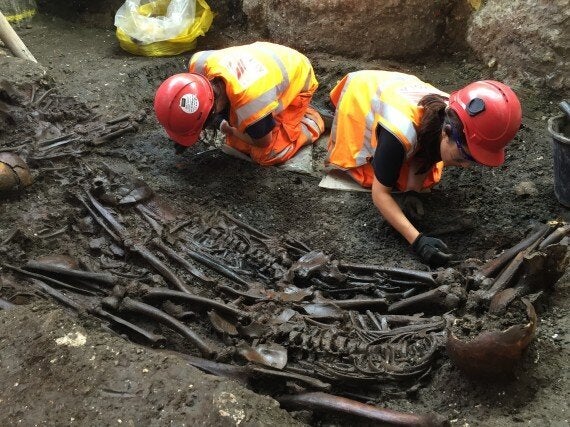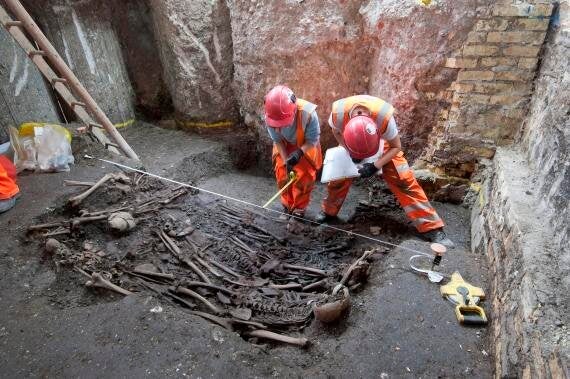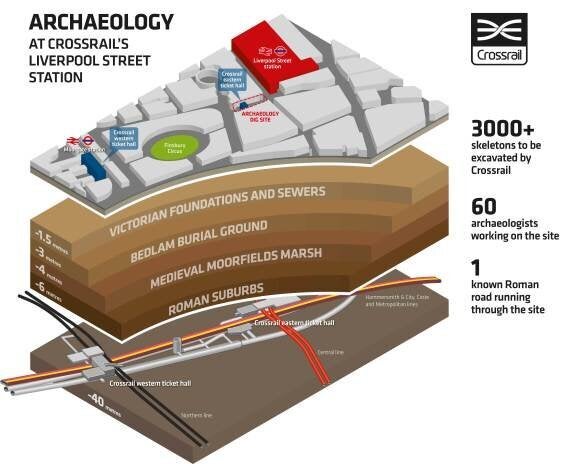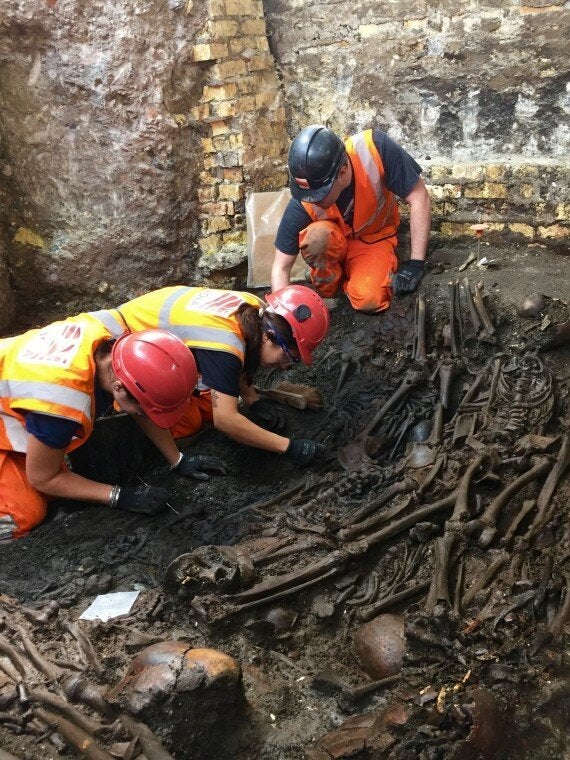A mass grave believed to contain 30 skeletons which could belong to victims of The Great Plague has been discovered by Crossrail excavators.
Workers at the Crossrail Liverpool Street site made the “gruesome but exciting find” on the 350th anniversary of the last major plague outbreak in 1665.
The discovery during excavation of the Bedlam burial ground could provide more information into “one of London's most notorious killers”.

Jay Carver, Crossrail lead archaeologist, said: “The construction of Crossrail gives us a rare opportunity to study previously inaccessible areas of London and learn about the lives and deaths of 16th and 17th Century Londoners.
“This mass burial, so different to the other individual burials found in the Bedlam cemetery, is very likely a reaction to a catastrophic event.
“Only closer analysis will tell if this is a plague pit from The Great Plague in 1665 but we hope this gruesome but exciting find will tell us more about the one of London’s most notorious killers.”

The skeletons are believed to have been buried in thin wooden coffins. The coffins have collapsed and become rotten, which gives the appearance of a slumped and distorted mass grave.
A headstone found near to the site was marked ‘1665’. This, and the fact that the individuals appear to have been buried on the same day, suggest they were victims of The Great Plague.
The skeletons will now be analysed by experts at the Museum of London Archaeology [MOLA] and tests will be carried out to determine if bubonic plague or some other pestilence was the cause of death.

Mike Henderson, senior osteologist at MOLA, said: "The concentration of burials in this pit provides a new focus for scientific testing and study.
"We hope detailed osteological analysis will help determine whether these people were exposed to The Great Plague and potentially learn more about the evolution of this deadly disease."
Excavation of the Bedlam burial ground began earlier this year.
The team of archaeologists from MOLA have carefully excavated more than 3,500 skeletons from what is, in archaeology terms, London’s most valuable 16th and 17th Century cemetery site.

The Bedlam burial ground was in use from 1569 to at least 1738, spanning the start of the period of Elizabethan explorers, the English civil wars, the Restoration of the Monarchy, Shakespeare’s plays, the Great Fire of London and numerous plague outbreaks.
The recent excavation suggests that 30,000 Londoners were buried at Bedlam between 1569 and 1738.
So far, Crossrail has found more than 10,000 artefacts spanning 55 million years of London’s past at over 40 construction sites.
The Crossrail route will pass through 40 stations, with services through central London due to be available in 2018.